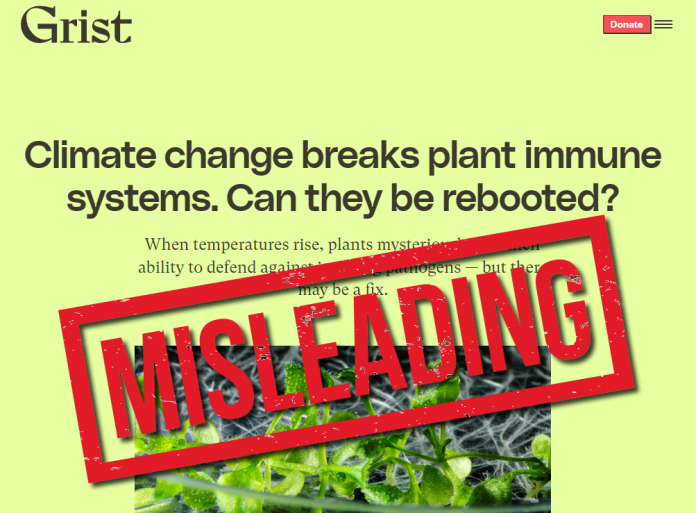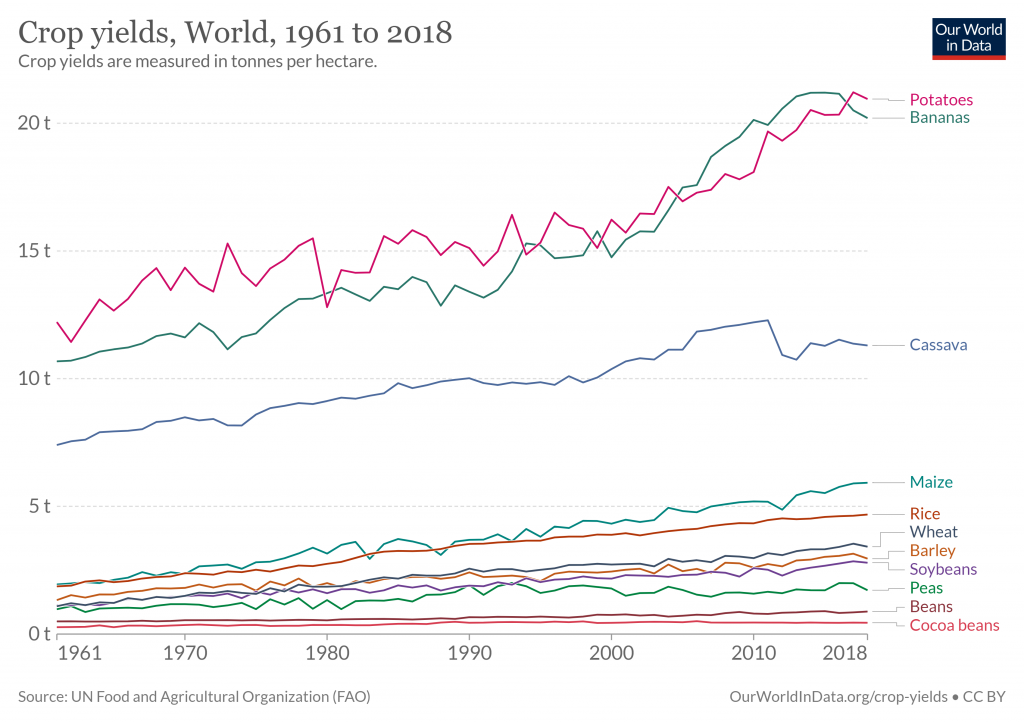An article in Grist magazine, titled “Climate change breaks plant immune systems can they be rebooted?” claims climate changed is hampering plants’ abilities to fight off pests and diseases. This isn’t just false, the claim is backwards and misleading.
Take the subtitle for example; “When temperatures rise, plants mysteriously lose their ability to defend against invading pathogens — but there may be a fix.”
Grist writes:
For much of the past decade, Sheng-Yang He, a plant biologist at Duke University, has been studying why plant immune systems fail in the heat. It’s a molecular mystery that involves unpacking dozens of genes to figure out why plants can no longer produce important chemicals, like SA, when temperatures rise just a few degrees. That’s the kind of dysfunction that is expected to become vastly more common for all sorts of plants as the climate changes and heat waves become more intense and frequent. And now, in a paper published in Nature, He’s team describes how that immunity can be restored.
It is no surprise to anyone that excessive heat will in fact wither any plant. But what is surprising is the twists and turns Grist takes in a effort to place the blame for potential plant heat deaths squarely on humans.
There is no one way that climate change will affect plants. In some cases, rising heat and CO2 levels might hasten photosynthesis, causing them to grow faster. In others, they may shrivel and die from the stress of overheating. The geography of climate change will also vary greatly, causing crippling drought in some places while other ecosystems drown. Overall, such rapid change is not good for organisms that cannot swiftly walk themselves over to new habitats, like animals can. And just as more diseases are expected to spill over into people as the range of pests and pathogens spreads in a warming world, plants too will face new or more aggressive pestilence within their native ecosystems or farmland. Last week, a separate study published by researchers at the Chinese University of Hong Kong projected global crop yields could fall 20 percent by 2050 due to the effects of climate change.
…
“The last 150 years have dramatically changed things, and humans are responsible for it.”
The article goes on to claim “global crop yields could fall 20 percent by 2050 due to the effects of climate change.” The story ignores the copious amounts of research and hard data detailing the benefits of increased atmospheric carbon dioxide and of the mild warming to plants, including crops, over the past 150 years.
Grist obviously ignored another published study, Elevated CO2 Concentration Improves Heat-Tolerant Ability in Crops. Its conclusion states:
The influence of [CO2] with the connection of temperature is considerable on crops under stress environments. The CO2 concentration improves the productivity of crops because of improved carbon exchange rates, and superior vegetative and reproductive growth. In contrast, crop productivity is decreased with increased temperatures.
Bottom line, temperature increase by itself can be harmful to crops, but when combined with increased CO2 in the atmosphere, crops actually do better.
The peer reviewed publication Climate Change Reconsidered: Biological Impacts, from the Non-Governmental International Panel on Climate Change, also cities hundreds of studies detailing the myriad benefits plant and animal life experience from higher atmospheric carbon dioxide concentrations and modestly warmer temperatures.
In the zeal to make climate change the culprit, Grist simply ignores the real-world data of crop production, getting everything about climate change and plant growth backwards, in the process.
For example, a simple plot of crop yields produced by Our World In Data using data from the U.N. Food and Agriculture Organization (FAO) seen in the figure below shows clearly that despite the modest climate warming seen in the last century, many crops have increased their yields significantly.
What’s more, in the article the World Is Greener So Far This Century Thanks to CO2, on Climate Realism, has previously pointed out NASA’s Vegetation Index – measured by satellites – show remarkable benefits for global plant life.
Also, a 2020 study by Haverd et al., found that “…about 70% of the Earth’s post-1980s vegetative greening trend has been driven by CO2 fertilization.”
The Haverd study also indicates this greening will offset the equivalent of 17 years of man-made carbon dioxide emissions by 2100.
So, while climate alarmists like Grist wring their hands about the imagined doom and gloom for crop yields from “climate change,” the Earth’s crops are using that increased CO2 and slightly warmer climate to their advantage.
The media isn’t discussing this good news because it goes against the alarmist narrative.


















